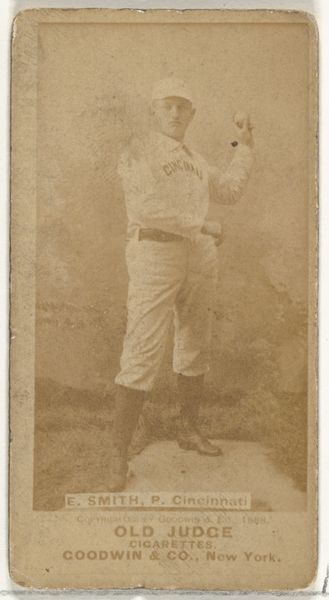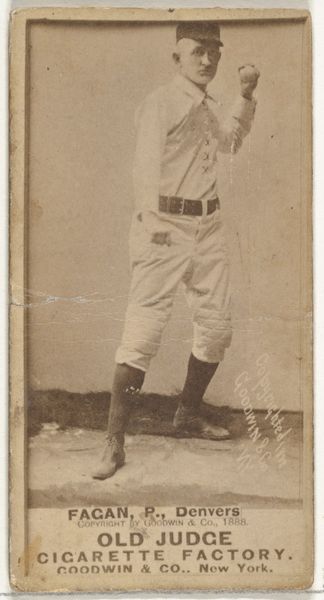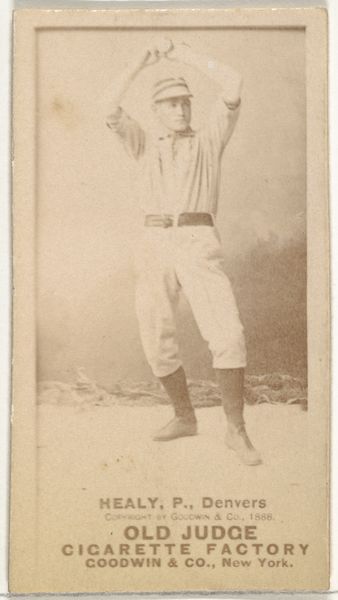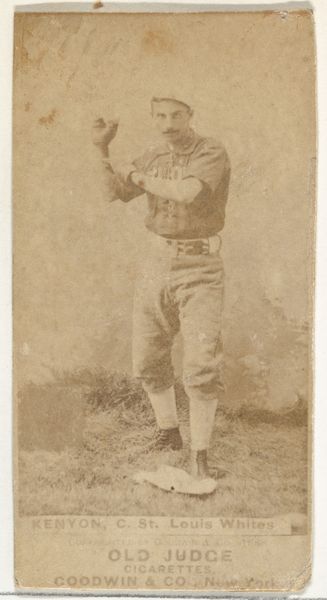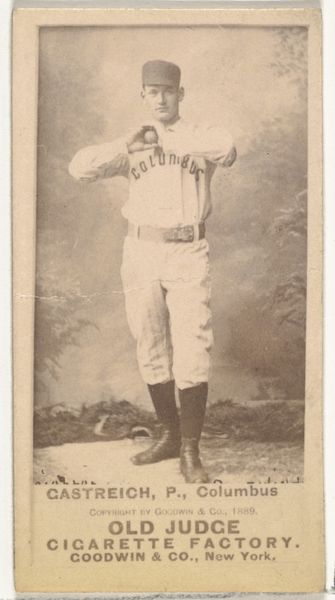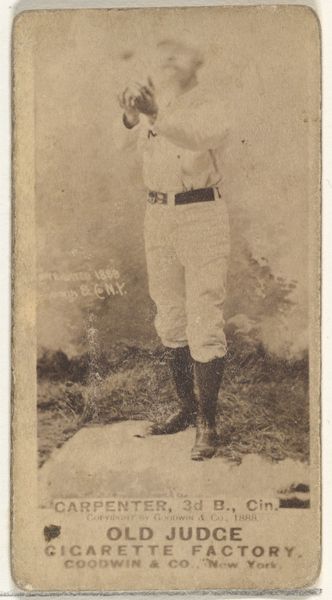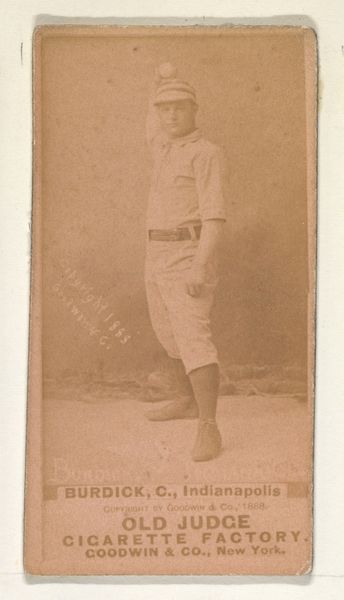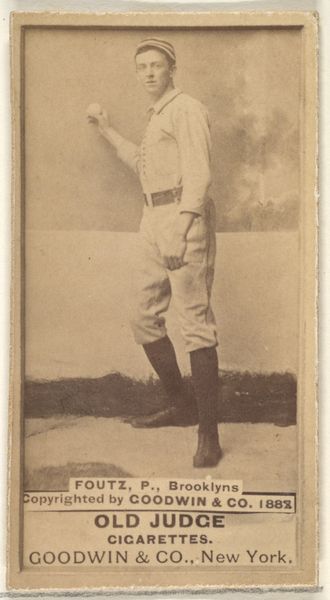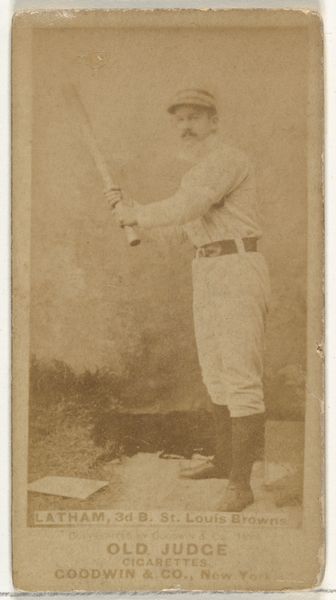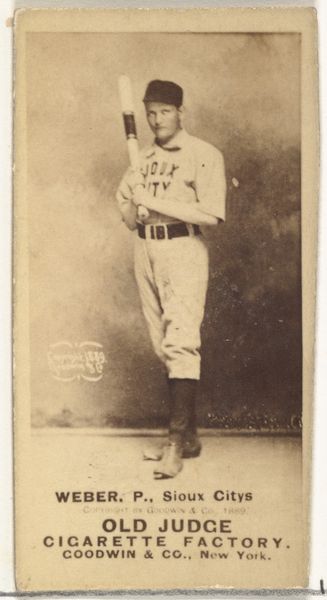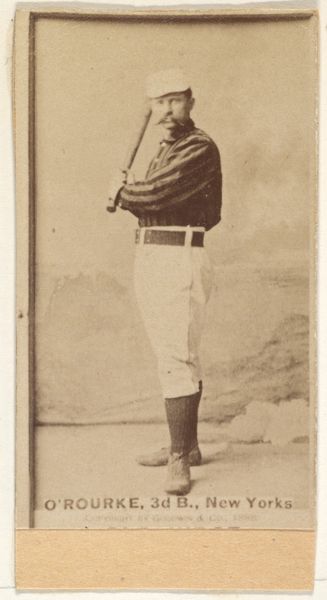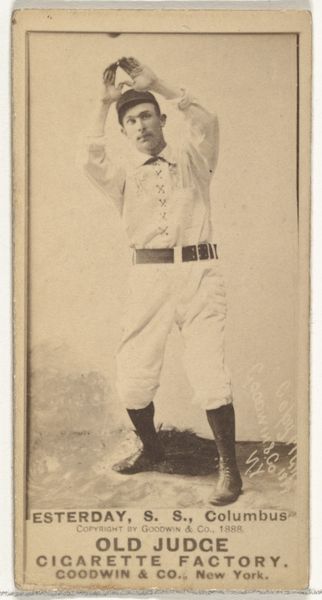
Anthony John "Tony" Mullane, Pitcher, Cincinnati, from the Old Judge series (N172) for Old Judge Cigarettes 1888
0:00
0:00
drawing, print, photography
#
portrait
#
pencil drawn
#
drawing
#
toned paper
#
light pencil work
# print
#
pencil sketch
#
baseball
#
photography
#
pencil drawing
#
men
#
athlete
#
realism
Dimensions: sheet: 2 11/16 x 1 3/8 in. (6.9 x 3.5 cm)
Copyright: Public Domain
Curator: So, what catches your eye about this particular artifact? Editor: This is Anthony John "Tony" Mullane, a baseball player, captured in a print from 1888, as part of the Old Judge series for Old Judge Cigarettes. It's sepia-toned, and has this vintage quality… it makes me think about how we immortalize sports heroes, but what was it *really* like for athletes then? It's interesting that it's linked to a specific product, cigarettes. What’s your interpretation of the work? Curator: Let's consider the material context. This print existed not primarily as “art” but as a promotional item inserted into cigarette packs. It was a collectible, consumed alongside tobacco. We see a blurring of high art and consumer culture, where celebrity and commodity intertwine. Think about the labor involved: the photographers, the printers, the factory workers assembling the cigarette packs. Each element contributed to its production. Does it challenge the traditional hierarchy of art and ephemera? Editor: Absolutely. It’s like… the image’s purpose wasn't to be in a museum. It was meant to be collected, traded, maybe even discarded. It shows us how deeply connected art and consumption really are. The means of its production really determined its value, at least initially. How did it find its way into a museum like the Met? Curator: Excellent question! The print's survival speaks to changing valuations of material culture. What was once disposable has now become an artifact worthy of preservation and study. We’re now acknowledging how popular culture is enmeshed with economic structures. What's important to remember, is this card isn't "just" a portrait. It represents complex networks of production, distribution, and consumption in the late 19th century. Editor: I hadn't considered all those steps, or that path from disposable commodity to valuable artifact! Thinking about it this way reveals the hidden systems behind even a simple image. Curator: Precisely! That interplay of materials, processes, and societal values truly enriches our understanding of the artwork and its place in history.
Comments
No comments
Be the first to comment and join the conversation on the ultimate creative platform.
